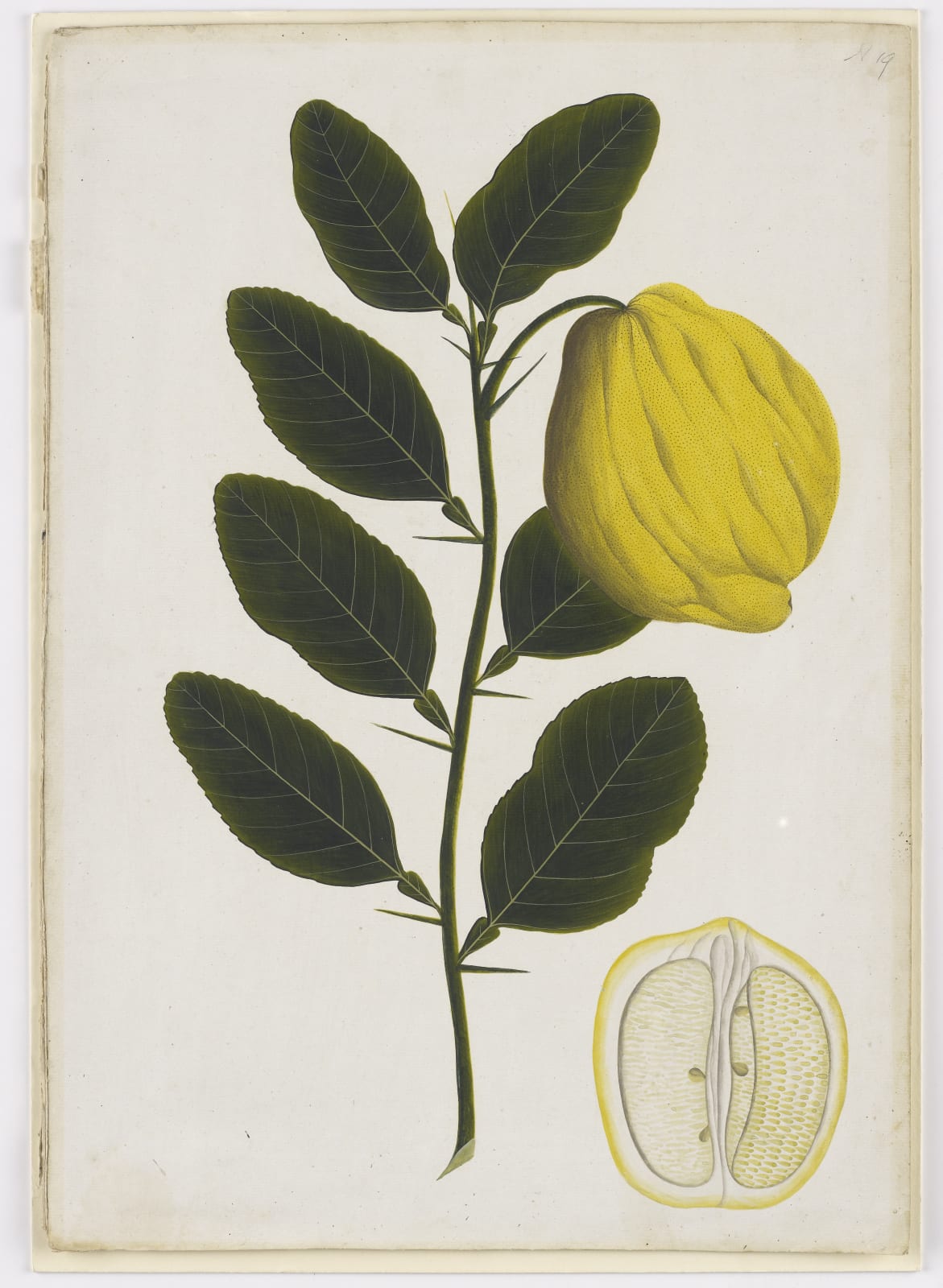
Botanical Study From The Rutaceae Family, Genus Citrus, c.1800
Opaque watercolour on paper
50 x 25 cm
Copyright The Artist
The East India Company founded its trading centres in India in the early 17th century but it was not until the second half of the 18th century that East India...
The East India Company founded its trading centres in India in the early 17th century but it was not until the second half of the 18th century that East India Company employees began to commission Mughal trained artists to produce watercolours to English taste, thus creating what is now known as Company School painting. Among the most beautiful are the early natural history drawings of Indian fauna and flora. Menageries and botanical gardens were established in Calcutta and Madras at the end of the 18th century and exquisite illustrations of their animal, plant and bird life were commissioned by such patrons as Sir Elijah and Lady Impey, the Marquess Wellesley and Lady Clive.
Major James Nathaniel Rind (d.1813) was another enthusiastic observer of Indian life and collector of paintings. He was in India from 1778 to 1804 where he became a brigade major in Calcutta in 1801. He commissioned a large collection of botanical studies, some of which are illustrated in the ground breaking exhibition 'Room for Wonder'.
Major James Nathaniel Rind (d.1813) was another enthusiastic observer of Indian life and collector of paintings. He was in India from 1778 to 1804 where he became a brigade major in Calcutta in 1801. He commissioned a large collection of botanical studies, some of which are illustrated in the ground breaking exhibition 'Room for Wonder'.
Literature
Welch, S.C., Room for Wonder - Indian Painting during the British Period 1760-2880, 1978, 12a, b, c, 13, pp. 45-49